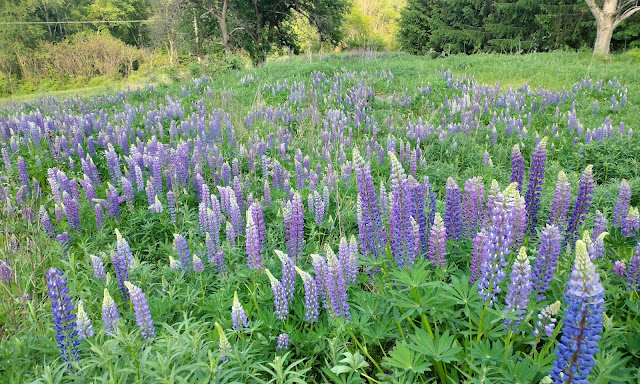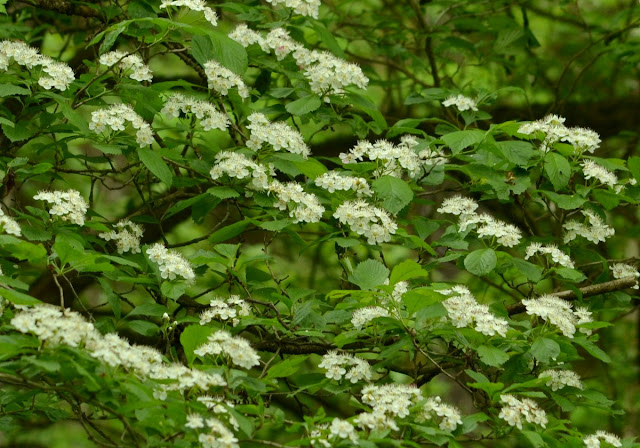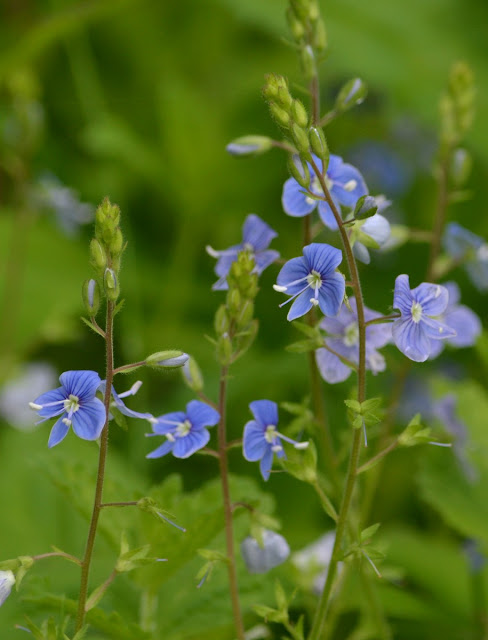I've already posted about the Eastern Bluebirds who raised their families in our yard this spring and summer, but we had a lot of other cool sightings during that time, too! Here are some highlights from our property during May and June of this year.
May is peak migration time, and it's always fun to get glimpses of the birds that pass through our yard on the way to their summer breeding grounds, near or far. Here's a White-crowned Sparrow on May 7, pausing briefly here during its journey to somewhere in northern Canada:
Migration also meant that we added three new bird species to our yard list in May this year, bringing our total list of bird species seen and/or heard on our property to 116! (Wow!) Bird #114 was a Least Flycatcher who was hunting and calling from a big apple tree in our meadow on May 7 (thanks to Merlin's sound ID feature for helping me to confirm this little bird's identity). Bird #115 was, incredibly, an Eastern Whip-poor-will who called for a few minutes after 9:00 PM on May 11; the bird was singing from somewhere beyond our property, but it was loud enough that I heard it from inside the house. (Eastern Whip-poor-wills are rare around here, and I expect that this was a once-in-a-very-long-while event.) Bird #116 was a Prairie Warbler who moved quickly through our yard, singing a few times, on May 28.
Of course it's also wonderful to come across birds that I see more regularly, especially birds who are only around during the warmer months. This Broad-winged Hawk circled overhead for a bit on May 7; I'm fairly sure that these hawks nest somewhere in the woods bordering our property, but I don't know whether this individual was here to stay for the summer, or whether it was planning to move on:
This male Common Yellowthroat was singing insistently at the edge of the meadow on May 14, perhaps establishing his territory for the season (this is another species that breeds here):
Also on May 14, this male Scarlet Tanager made a nice contrast with newly emerging Shagbark Hickory leaves and flowers:
Just a few days after I took that picture, we had a late hard freeze that destroyed most of this Shagbark Hickory's leaves (and many emerging leaves on other plants, too). This tree and pretty much everything else recovered fine, but it was tough to see so much blackened and bare plant life in the second half of May.
On May 16, I got to admire this Black Swallowtail butterfly up close after it emerged from a chrysalis that overwintered in our unheated mudroom:
Downy Woodpeckers had a nest in a partially-dead tree at the edge of our property this year. I didn't get to see the babies, but I certainly heard them, and the parents made frequent visits. Here's the male at the nest hole on May 27:
On May 30, this Eastern Chipmunk was stuffing its cheeks full of Silver Maple seeds that had fallen from the tree in our front yard:
Those are some big cheeks! And I love this view from behind:
On May 31, a swarm of Honey Bees settled briefly high up in the branches of an oak tree in our front yard:
I'd never seen a Honey Bee swarm in person before! Here's a closer view -- wow, that's a lot of bees:
I didn't take a whole lot of pictures of wildflowers during this time, but here's an especially floriferous Starflower plant along our woods path on June 2; I don't usually see three of these lovely blossoms on a single plant:
And I was pretty well blown away by the Wild Lupine display in our meadow this year. I wonder if these plants were helped along by the extremely dry May we had, or maybe they've just been really successful at increasing their population each year (despite the ever spreading goldenrod). Whatever the reason, there were more lupine flowers in the meadow this year than I've ever seen before, and it was glorious. I'm so glad these plants took off when we scattered their seeds after excavation work in the meadow in 2017! Here's a view of a small portion of the lupine show on May 31:
And a wider view on June 2:
I loved seeing some variations in colors among different plants, like these bicolor white-and-purple flowers on June 4:
These flowers were a big hit with the pollinators, too. Here's a Honey Bee enjoying the lupines on June 5:
This male Brown-headed Cowbird was looking fancy in newly emerging Redbud shoots on June 6 (after the tree's first attempt at new growth was entirely destroyed in the May 18 freeze):
In the woods on June 15, I happened to spot a Small-eyed Sphinx (Paonias myops). This moth was doing a very good dead leaf impression, dangling by its front legs from a Multiflora Rose stem:
Up close, this moth's wings look to me like they're decorated with gold leaf; ah, so pretty, and the shapes of these wings are so interesting:
(Incidentally, Multiflora Rose is one of those nasty invasives that I'm trying to gradually remove from the property; there's quite a lot of it out there, but it hasn't totally taken over any areas yet, and I've been making slow but steady progress each year. My strategy this year was to cut some plants to the ground and place a wide flat rock over each stump, and that actually seemed to work pretty well, as long as the rock was wide enough. Last year, I tried cutting down plants and treating the stumps with triclopyr, which mostly worked, but some of the plants still regrew. We have an abundance of wide flat rocks on the property, so I'll likely keep going with that strategy for now.)
On June 21, I saw one of our Eastern Phoebes hunting in the meadow, using young trees as convenient perches:
Here's another picture of this lovely bird perched on a small hawthorn sapling:
(I wonder how long it will be before this area is no longer quite a meadow, with small trees and shrubs moving in. I don't feel the need to maintain this strictly as a meadow, and I'm very curious to see how this landscape will change over the years.)
Also on June 21, a couple of Ovenbirds in the woods came near me and made sharp sounds and generally made it clear that I wasn't welcome -- I think they may have had a nest somewhere near the path. Yes, you are bold little birds, and also adorable:
Speaking of adorable, here's a young Tufted Titmouse at the edge of the meadow (also on June 21):
On June 29, I was surprised to see a juvenile Dark-eyed Junco grooming itself right in the middle of a small table on our back deck:
This little bird then sat on the table for several minutes, apparently resting -- it didn't seem to be hurt, and it flew away after a little while, but it was definitely strange to see this young bird lounging on our deck furniture:
Finally, our trail camera in the woods picked up several cool sightings in June, so here's a small selection of clips, featuring:
- Our first sighting of an American Mink on our property. This was a surprise, because I've only seen mink around water before! But this mustelid-type creature was too big to be a weasel and too small to be a Fisher (both of which have appeared on the camera in this spot in the past), and there are wetlands just a little further downhill from here; and it sure looks like a mink.
- An Ovenbird doing its chicken-like walk across the log.
- A mother White-tailed Deer and her twin fawns.
- A Raccoon with two babies (and sounds!).

















%201.jpg)
%202.jpg)


















.jpg)

































